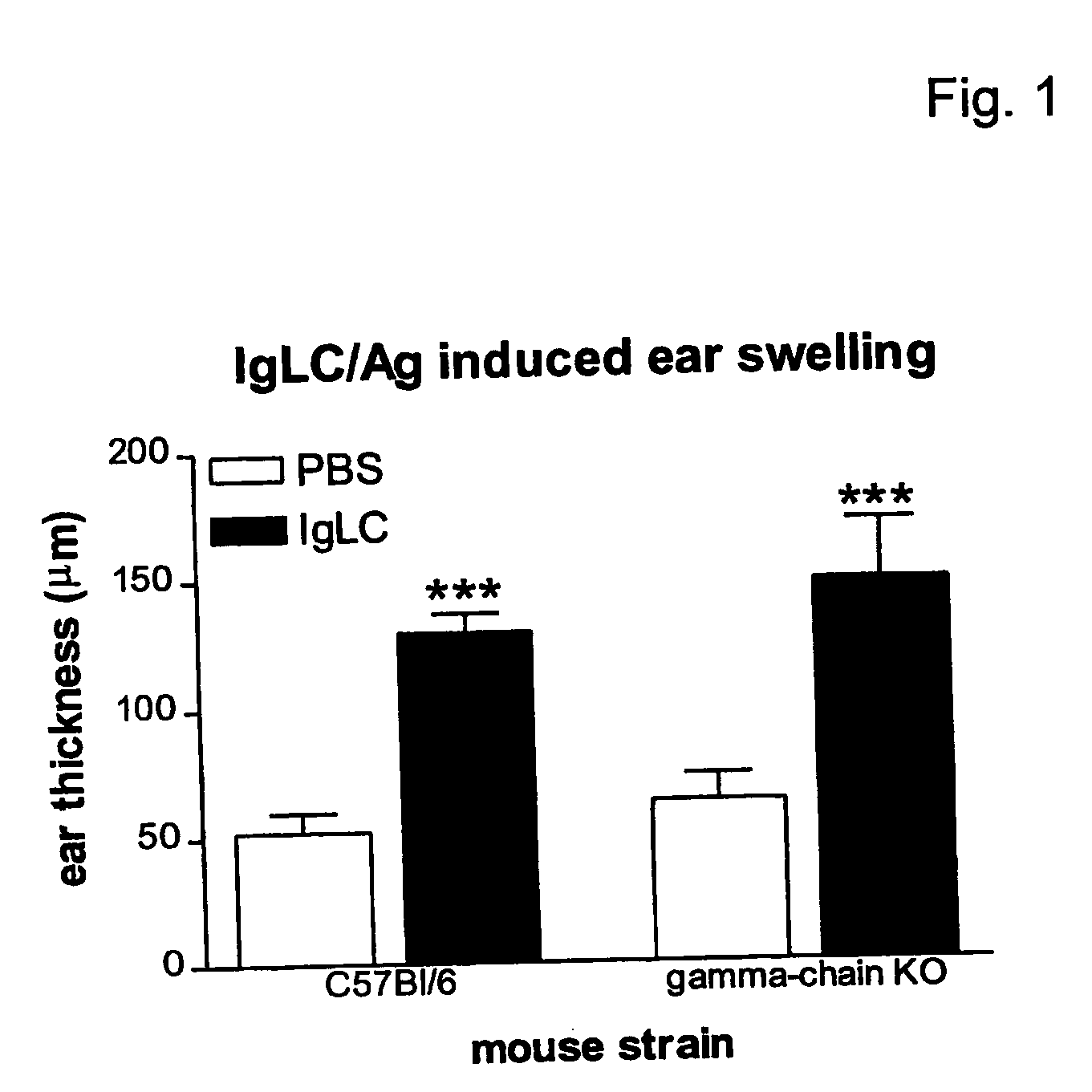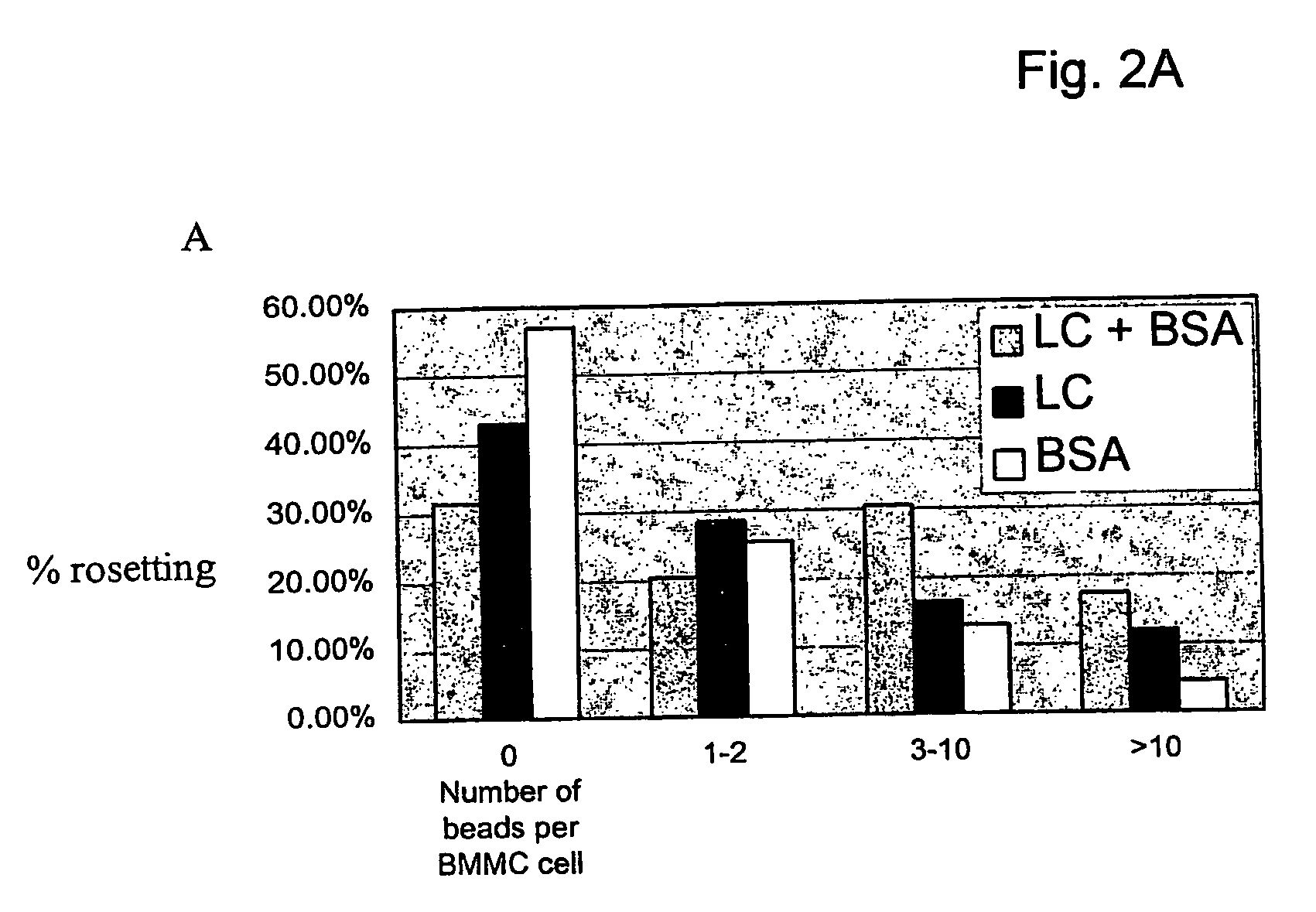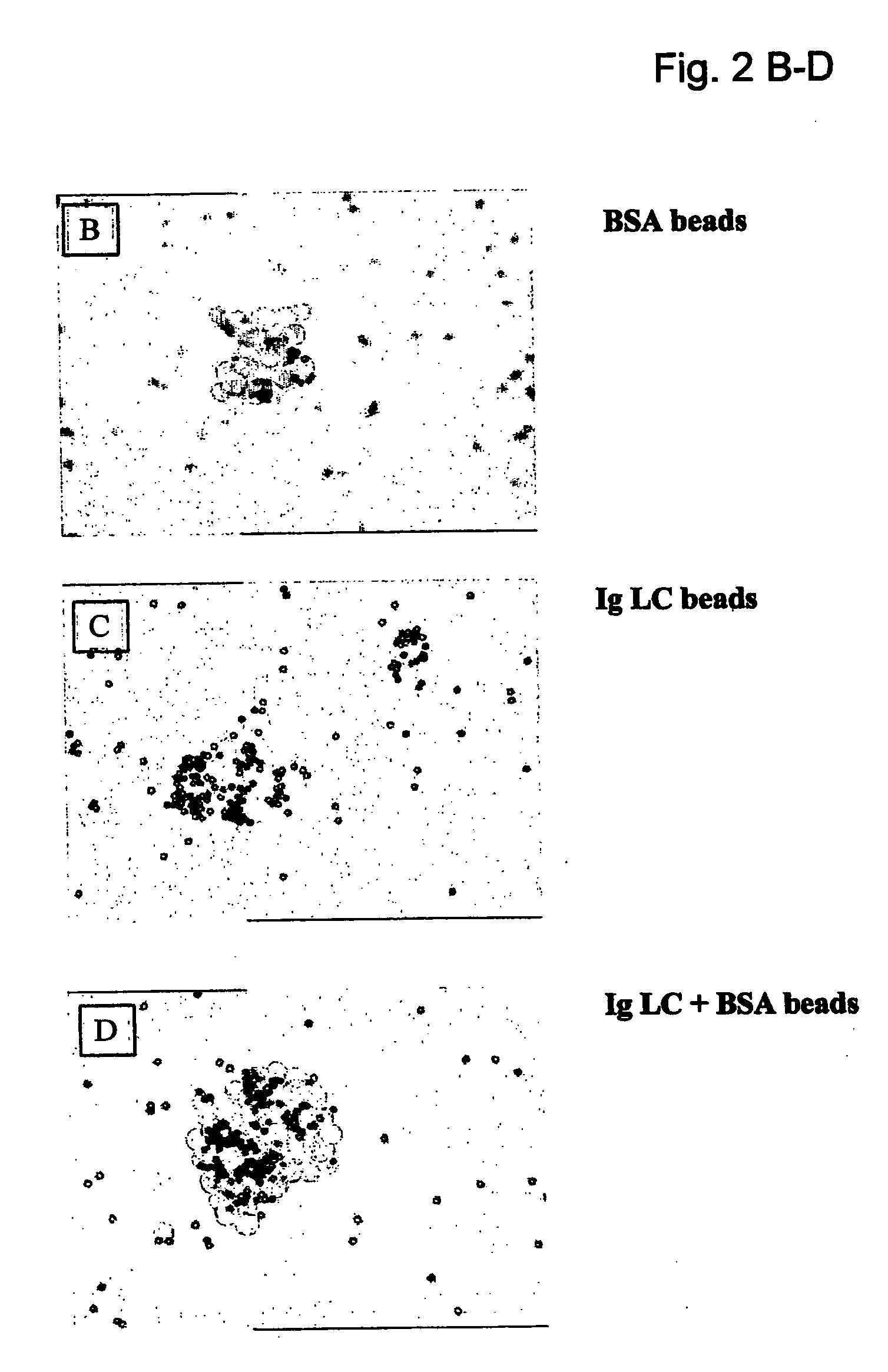Means and methods for manipulating hypersensitivity-like responses
a hypersensitivity response and hypersensitivity technology, applied in the field of immunology and molecular biology, can solve the problem of insufficient sequence information, and achieve the effect of preventing binding, inhibiting ig-lc-induced cutaneous reactions, and preventing binding
- Summary
- Abstract
- Description
- Claims
- Application Information
AI Technical Summary
Benefits of technology
Problems solved by technology
Method used
Image
Examples
example 1
Ig-LC do not Activate Gamma Chain-Associated Receptors
[0053] From our studies, it is clear that mast cells are crucial for the development of acute responses in skin and airways leading to ear swelling and acute bronchoconstriction, respectively. Thus far, triggering the high-affinity IgE receptor (FcεRI) and the low-affinity IgG-receptor (FcγRIII) are the only routes known to activate mast cells in an antigen-specific manner. We investigated whether Ig-LC exerted their action via activation of the FcγRIII or FcεRI receptors. Both receptors signal via the common gamma chain and can trigger hypersensitivity reactions via activation of mast cells. Passive sensitization of animals deficient in the common gamma chain (FcRγ− / −) resulted in similar ear swelling responses after hapten challenge as compared to wild-type (C57BL / 6) animals (FIG. 1). This indicates that Ig-LC interacts with a receptor that does not need the common gamma chain for signaling and thereby excludes FcεRI and FcγRI...
example 2
Biochemical Isolation and Purification of Ig-LC Receptor
[0054] Chemical cross-linking of ligand to cellular membrane was the method employed to isolate and identify cell surface proteins as putative receptors for various ligands. Magnetic beads were coupled to Ig-LC. These beads were then incubated with murine bone marrow-derived mast cells and after washing the cells, Ig-LC (bait) were chemically cross-linked to cell surface proteins in immediate proximity to the binding site. After lysing the cells, Ig-LC cross-linked cell surface proteins were separated from non-bound proteins using a magnetic device. Proteins were washed and separated using SDS-PAGE (1-D or 2-D), followed by silver staining. Proteins were further characterized and identified with Maldi-TOF mass spectrometry and / or Edman degradation. Binding of Ig-LC-conjugated magnetic beads coupled to mast cells were visualized by light microscopy. Binding was specific for light chain, since no binding was detected when beads ...
example 3
Expression Cloning of the Ig-LC Receptor
[0055] Expression cloning was used to clone an Ig-LC receptor. A cDNA library from primary cultured murine mast cells (BMMC) was constructed. This cDNA was transfected into mammalian cells. Transfected cells were compared in their binding capacity for Ig-LC using a flow cytometer. Cells binding Ig-LC above background were collected by the FACS sorter. Transfected DNA from these cells were isolated and used for succeeding transfection rounds. After several transfection / sorting rounds, a single Ig-LC receptor-expressing cell population was isolated. The transfected DNA from this population encodes for the putative Ig-LC receptor. A receptor present on mast cells of specific interest for binding Ig-LC is CD 63, a transmembrane-5 (TM5) membrane protein. This receptor is expressed by, for example, mast cells, granulocytes and leucocytes and cross-linking of this receptor results in mast cell activation and mediator release. FACS experiments showed...
PUM
| Property | Measurement | Unit |
|---|---|---|
| apparent molecular weight | aaaaa | aaaaa |
| molecular weight | aaaaa | aaaaa |
| molecular weight | aaaaa | aaaaa |
Abstract
Description
Claims
Application Information
 Login to View More
Login to View More - R&D
- Intellectual Property
- Life Sciences
- Materials
- Tech Scout
- Unparalleled Data Quality
- Higher Quality Content
- 60% Fewer Hallucinations
Browse by: Latest US Patents, China's latest patents, Technical Efficacy Thesaurus, Application Domain, Technology Topic, Popular Technical Reports.
© 2025 PatSnap. All rights reserved.Legal|Privacy policy|Modern Slavery Act Transparency Statement|Sitemap|About US| Contact US: help@patsnap.com



